1. The Texas Horned Lizard’s Blood-Spitting Horror Show
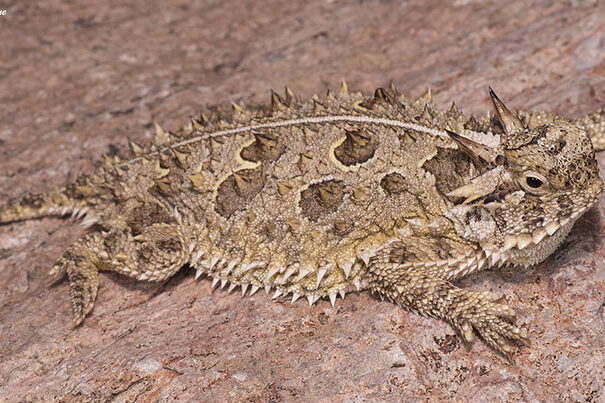
Imagine you’re a predator, thinking you’ve just caught yourself a tasty lizard snack. Suddenly—BAM!—it shoots a stream of blood straight from its eyes. That’s right, the Texas horned lizard turns into a horror movie prop when threatened, squirting blood up to five feet. The worst part? It’s not just any blood—it’s laced with foul-tasting chemicals designed to repel coyotes and other would-be attackers. If the sheer shock factor doesn’t send predators running, the taste certainly does. Scientists believe this ability evolved as a last-ditch defense, making the lizard an unappetizing meal before it becomes one.
Even more fascinating, the lizard doesn’t always use this tactic—it saves it for specific predators. Birds of prey, for example, aren’t affected by the taste, so the lizard has to rely on camouflage or speed instead. When dealing with canines, however, the blood not only startles them but also causes irritation in their mouths. This means that a coyote that’s been sprayed once will think twice before trying to chomp down on another horned lizard. Evolution, once again, proves that sometimes the weirdest tricks are the most effective.
2. The Hairy Frog’s Wolverine-Like Claws
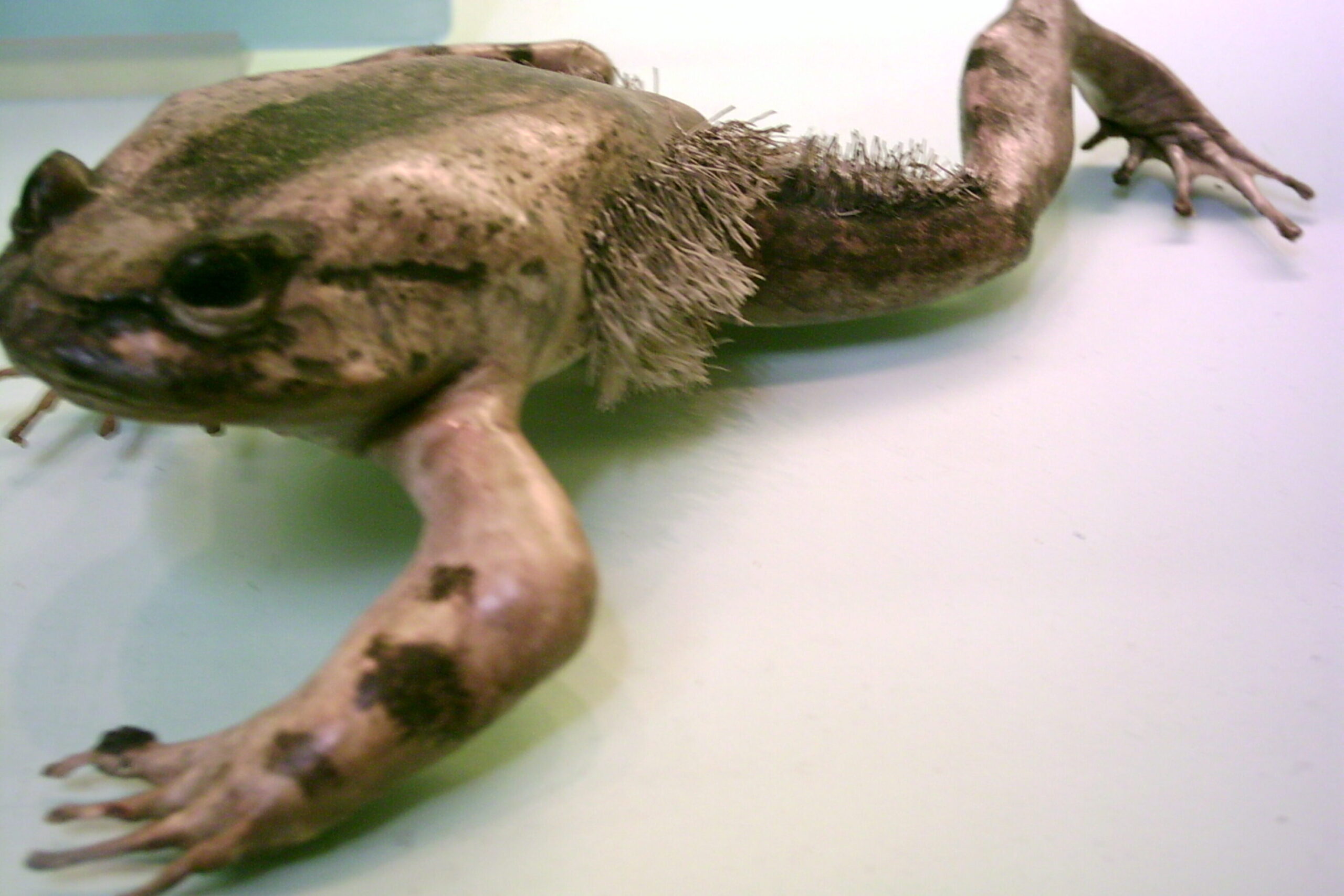
Superheroes aren’t the only ones with retractable claws. Meet the hairy frog, also known as the “Wolverine Frog.” Instead of running away when threatened, it breaks its own toe bones, pushes them through its skin, and forms makeshift claws. Imagine having to snap your own fingers to grow knives—now that’s dedication to self-defense. Scientists are still unsure if the claws retract back in, but either way, this amphibian isn’t playing around. To make things even stranger, male hairy frogs also grow hair-like structures on their bodies during breeding season, which help them absorb oxygen from the water.
This combination of bizarre traits makes the hairy frog one of nature’s most extreme defenders. It doesn’t just stop at scaring off predators; it doubles down on survival by adapting in ways most creatures wouldn’t dare. Breaking your own bones sounds like a nightmare, but for this frog, it’s a necessary evil. The fact that it can heal and regenerate makes this ability even more remarkable. If evolution had a list of “most hardcore animals,” the hairy frog would be right at the top.
3. The Opossum’s Award-Worthy Death Scene

Hollywood actors could learn a thing or two from opossums. When faced with danger, they collapse into a lifeless heap, foam at the mouth, and release a foul-smelling fluid that makes them smell like a rotting corpse. This isn’t just a casual faint—it’s a full-body commitment to looking absolutely disgusting. Some predators, like foxes, prefer fresh meals, so they lose interest in the seemingly “dead” opossum and move on. The trick works so well that even humans have been fooled into thinking an opossum was truly dead. In reality, this dramatic act is entirely involuntary—like an automatic panic response the animal can’t control.
To make the act even more convincing, the opossum’s body goes completely limp, its breathing slows, and its eyes glaze over. It can stay in this “death” state for several minutes to several hours, depending on how long it takes for danger to pass. Once it feels safe, the opossum simply “wakes up” and scurries away like nothing happened. If there were an Oscar for best animal performance, this little marsupial would win every year. It’s nature’s way of proving that sometimes, the best way to survive is to act like you’ve already lost.
4. The Malaysian Exploding Ant’s Self-Destructive Sacrifice

Most ants defend their colonies with biting and stinging. The Malaysian exploding ant, however, goes full kamikaze. When under attack, it flexes its body so hard that its internal glands burst, releasing a toxic goo that sticks to enemies and paralyzes them. This ultimate sacrifice protects the colony, ensuring the queen lives to see another day. A hero’s death, indeed. Unlike other ant species that rely on brute force, these ants are wired to explode when things get dire. It’s one of the rare instances where self-sacrifice is built into an animal’s natural instincts.
Scientists have discovered that only certain worker ants have this ability, and they’re often positioned at the colony’s outer defense lines. When enemy insects invade, these soldiers willingly detonate, covering the battlefield in sticky, deadly chemicals. This means that each explosion is a well-calculated move, not just a random act of destruction. While it may seem extreme, it ensures the survival of thousands of colony members at the cost of just a few. In the world of ants, teamwork takes on a whole new meaning.
5. The Hissing Cockroach’s Audio Warfare
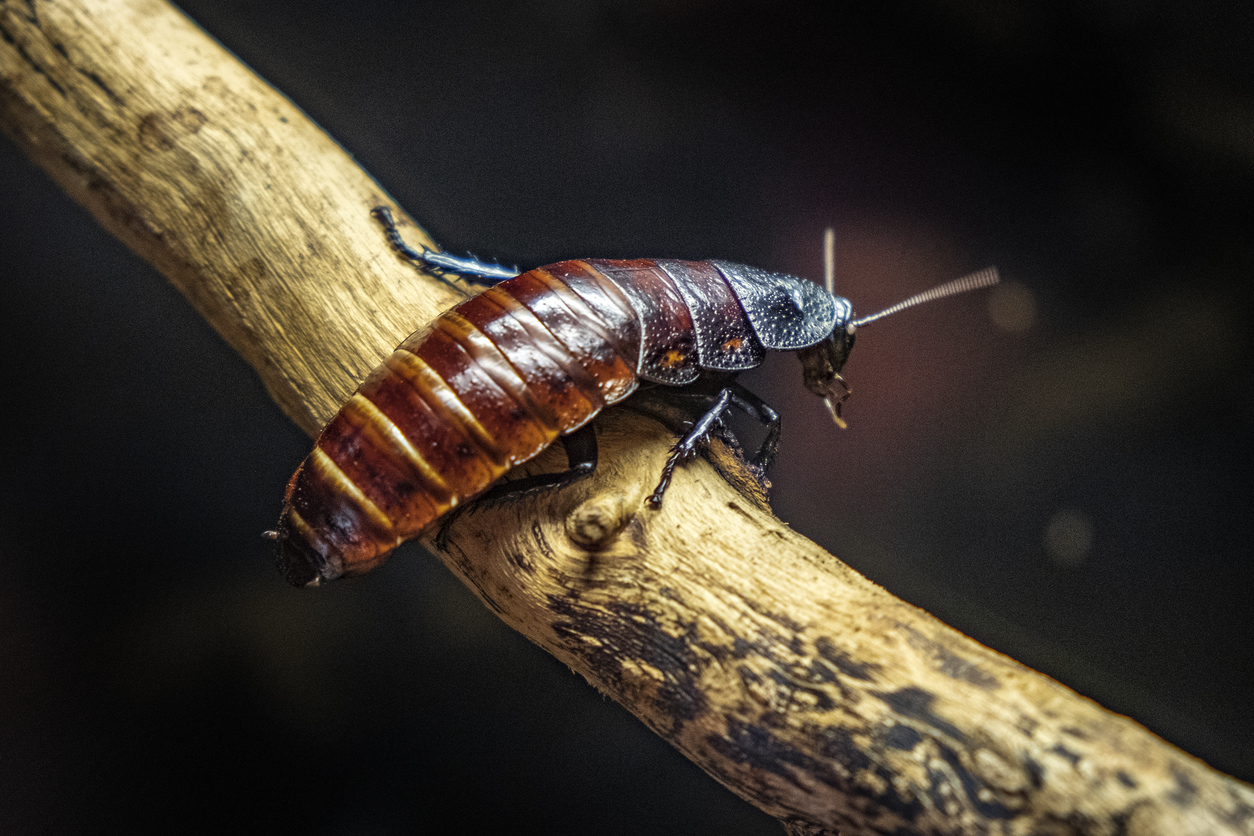
Cockroaches are already nightmare fuel for many people, but the Madagascar hissing cockroach takes it to another level. When threatened, it forces air through tiny openings in its body, creating a loud, snake-like hiss. This terrifying sound tricks predators into thinking they’re dealing with a venomous reptile instead of a crunchy insect. Talk about an identity crisis that actually works. Unlike most insects, which rely on buzzing or clicking sounds, this cockroach uses its unique “hiss” as a primary defense. The sound is loud enough to startle predators, buying the cockroach just enough time to escape.
What’s even creepier is that these cockroaches don’t just hiss when scared—they also use their hisses to communicate with each other. Males hiss to compete for mates, while others hiss to warn about danger. In a way, they have their own secret language, spoken entirely through bursts of air. This means that if you ever hear a weird hissing sound in a dark room, it might not be a snake—it might just be a cockroach plotting its next move. Either way, not a comforting thought.
6. The Sea Cucumber’s Intestine Ejection Trick

If someone tries to rob you, you don’t usually throw your intestines at them—but that’s exactly what sea cucumbers do. When threatened, they eject their own guts, covering predators in a sticky, toxic mess. The best part? They regrow their lost organs within weeks. Imagine being able to throw your liver at someone and grow a new one like it’s no big deal. This bizarre survival strategy confuses attackers and gives the sea cucumber a chance to make a slow, squishy getaway. Some species even release a special set of organs called Cuvierian tubules, which expand and entangle predators like a sticky web.
The strangest part? Some sea cucumbers don’t just eject their guts—they also release a cloud of poison that can kill fish in the surrounding area. This means they have both a defensive and offensive strategy, making them surprisingly formidable despite their soft and squishy appearance. The ability to sacrifice and regrow vital organs is rare in the animal kingdom, but for sea cucumbers, it’s just another day at the office. If there were an award for “most underrated badass of the ocean,” this creature would win hands down.
7. The Acid-Spraying Bombardier Beetle

This tiny beetle is packing serious heat—literally. When under attack, it mixes chemicals inside its body and sprays boiling hot acid at its enemies. This high-pressure explosion reaches temperatures of 212°F (100°C), enough to burn flesh and send predators running. Even larger animals like birds and frogs think twice before messing with this walking science experiment. The beetle stores the chemicals separately in its abdomen, and when danger strikes, it combines them in a reaction chamber, triggering an instant explosion. It’s basically a living, breathing chemistry lab.
What’s even wilder is that the beetle doesn’t just spray acid randomly—it aims. It can twist its abdomen to fire in different directions, making it nearly impossible for an attacker to escape unscathed. Some predators, like frogs, have been observed spitting out bombardier beetles mid-bite after getting blasted. Scientists have even studied this defense mechanism to inspire new technology, proving that nature’s weirdest defenses aren’t just fascinating—they might also be useful.
8. The Mimic Octopus’s Costume Changes
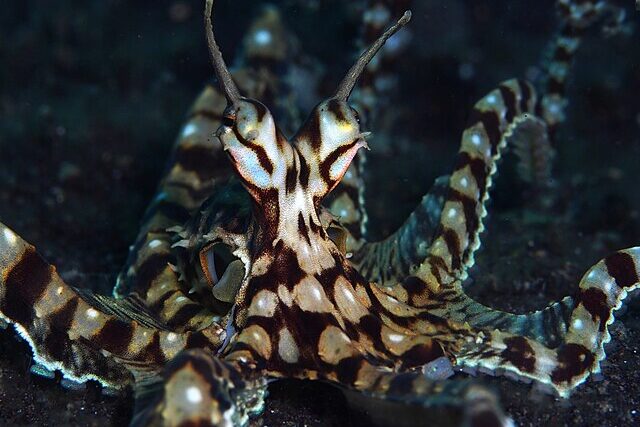
The mimic octopus deserves a spot in the animal kingdom’s hall of fame for deception. Instead of using brute force, it shapeshifts into more dangerous sea creatures, like venomous lionfish, sea snakes, and even jellyfish. This Houdini of the ocean can change its shape, color, and movement to trick predators into thinking it’s something far deadlier. Unlike other camouflaging animals that blend into their surroundings, this octopus takes mimicry to a whole new level by actively impersonating threats. It even adjusts its body language, swaying like a snake or spreading its arms to resemble a toxic flatfish.
Even more astonishing, the mimic octopus seems to choose its disguises based on what predator is nearby. If it senses a predatory fish that fears sea snakes, it elongates its arms and moves like one. If it encounters a creature that avoids lionfish, it fans out its arms and mimics their spiky appearance. This adaptability makes it one of the most intelligent tricksters in the ocean. In a world where blending in can mean life or death, the mimic octopus doesn’t just hide—it becomes something else entirely.
9. The Hoopoe’s Foul-Smelling Feathers
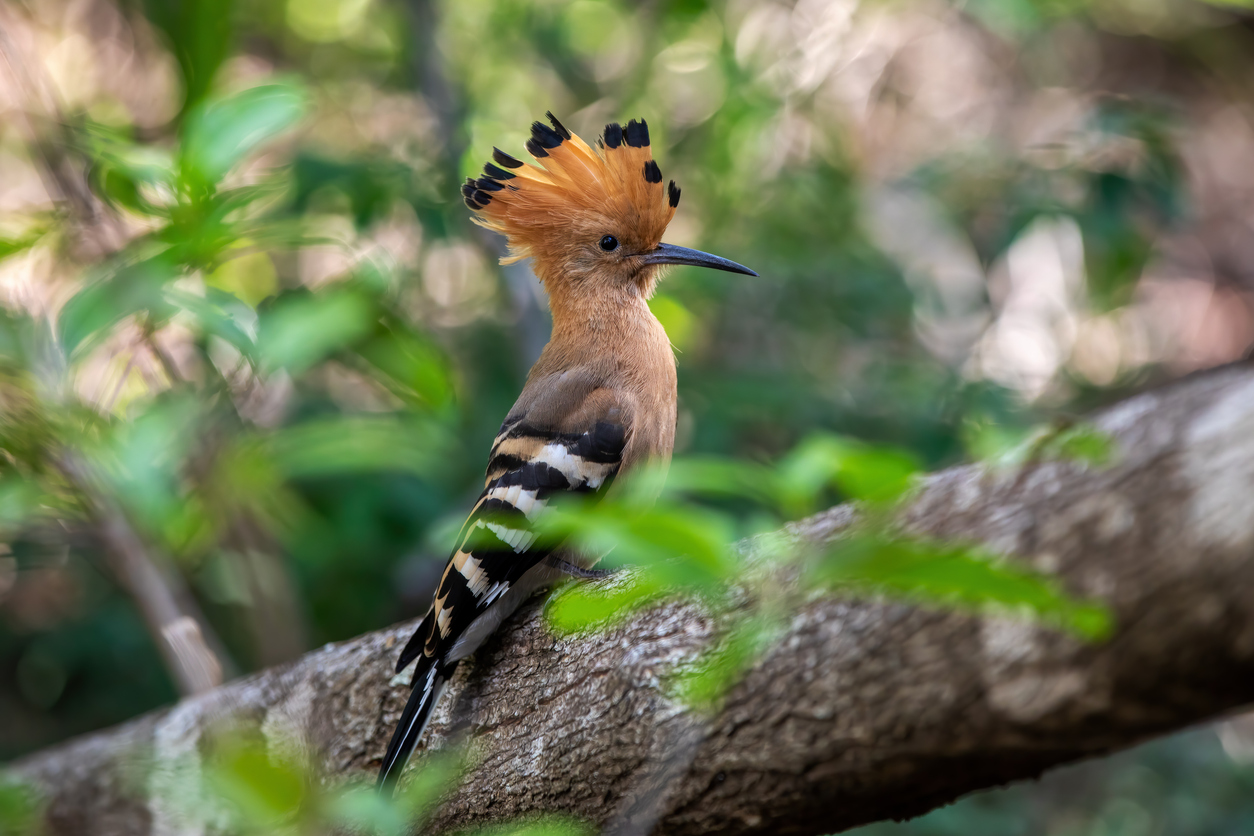
Not all birds rely on flight to escape danger. The hoopoe, a striking orange-and-black bird, has a rather unhygienic way of defending itself. It produces a vile-smelling secretion from a gland near its tail that makes it smell like rotten meat. Predators take one whiff and immediately regret their life choices. As if that weren’t enough, hoopoe chicks can squirt this nasty fluid at intruders, ensuring that anything daring enough to approach gets a face full of stink. The smell is so strong that even humans who handle hoopoes have complained about the lingering stench.
This defense tactic serves another surprising purpose—it acts as an antibacterial shield. Scientists have found that the secretion helps protect the hoopoe’s feathers from parasites and infections, giving it both a survival advantage and a built-in hygiene routine (even if it smells awful). While other birds rely on speed or aggression to ward off enemies, the hoopoe simply turns itself into something no predator wants to deal with. It’s the ultimate example of “if I can’t fight you, I’ll just make you wish you never met me.”
10. The Slow Loris’s Venomous Bite
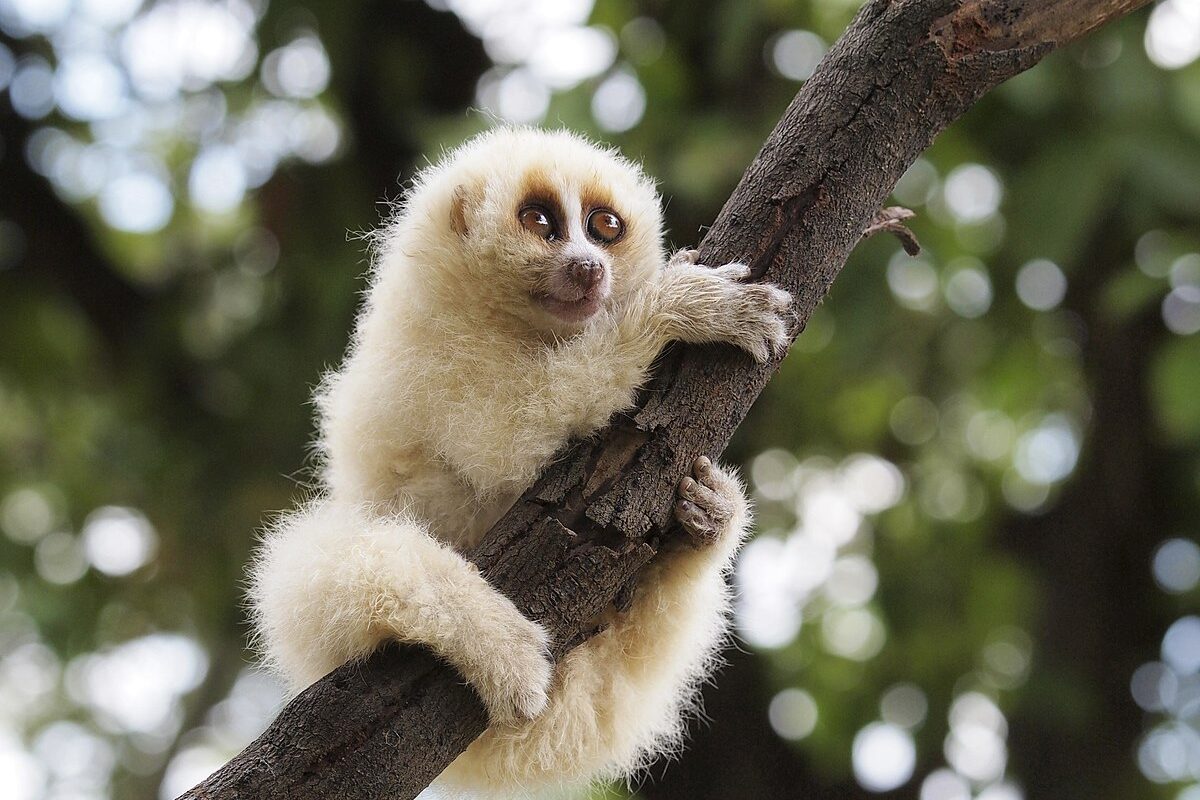
With its big, round eyes, the slow loris looks like the most innocent creature in the jungle—but don’t be fooled. This adorable primate licks a gland on its arm that produces a toxic secretion, then delivers a venomous bite that can send predators into an allergic shock. Even humans can suffer severe reactions from its bite, making it one of the only venomous mammals on the planet. The slow loris doesn’t just use this venom defensively; it also applies it to its fur, making itself taste absolutely terrible to potential attackers.
What’s even more unsettling is that slow lorises sometimes use this venom against their own kind. Males have been observed biting each other during fights, leaving deep, festering wounds. This makes them one of the rare animals that weaponize their own body fluids for both offense and defense. The contrast between their cute, teddy-bear-like appearance and their dangerous bite makes them one of nature’s most deceptive creatures. In other words, never judge an animal by its fluffiness.
11. The Peeping Owl That Pretends to Be a Snake
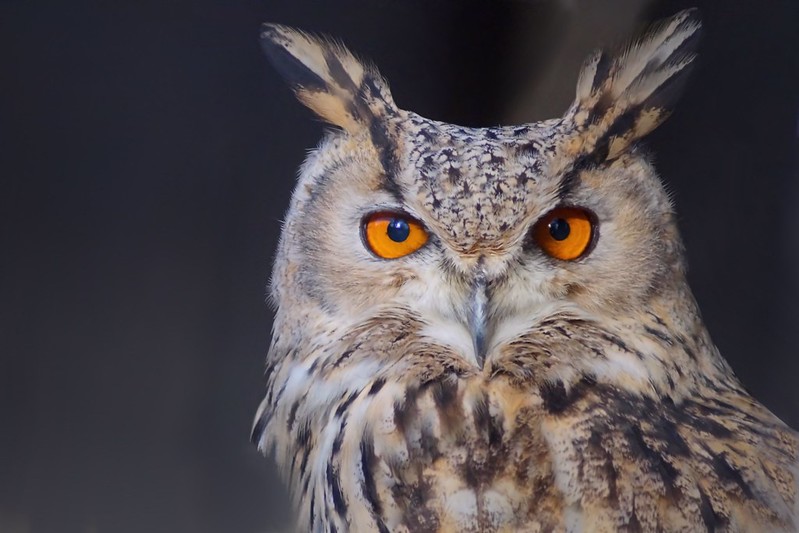
If you ever see an owl flatten itself against the ground and sway like a cobra, don’t be alarmed—it’s just trying to scare off predators. The burrowing owl, found in North and South America, mimics the movement and hissing sound of a rattlesnake when threatened. This clever act convinces hungry hunters that they’ve stumbled upon something venomous, making them reconsider their dinner plans. Even more impressive, young burrowing owls make a rattling sound from inside their burrows, mimicking a snake’s warning call before an enemy even sees them.
This form of mimicry is especially useful because many of the owl’s natural predators, like foxes and badgers, have learned to avoid rattlesnakes. By copying one of the most feared creatures in its environment, the owl increases its chances of survival without ever having to fight. It’s a perfect example of how nature rewards intelligence just as much as brute strength. In the wild, the best defense isn’t always claws or teeth—sometimes, it’s just a really convincing impression.


